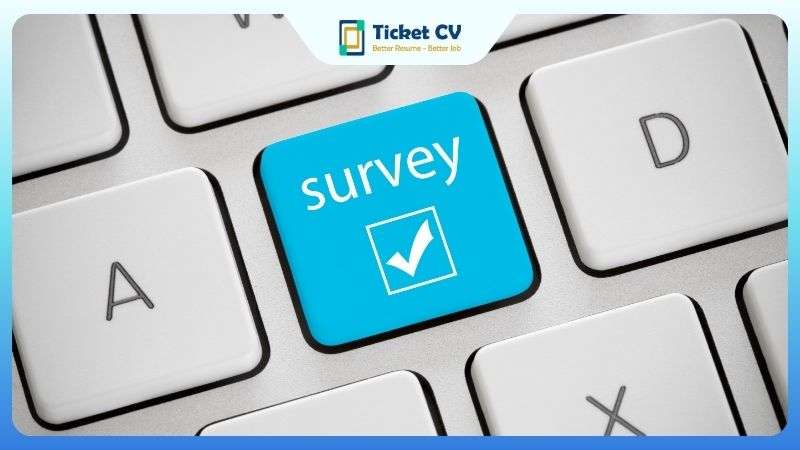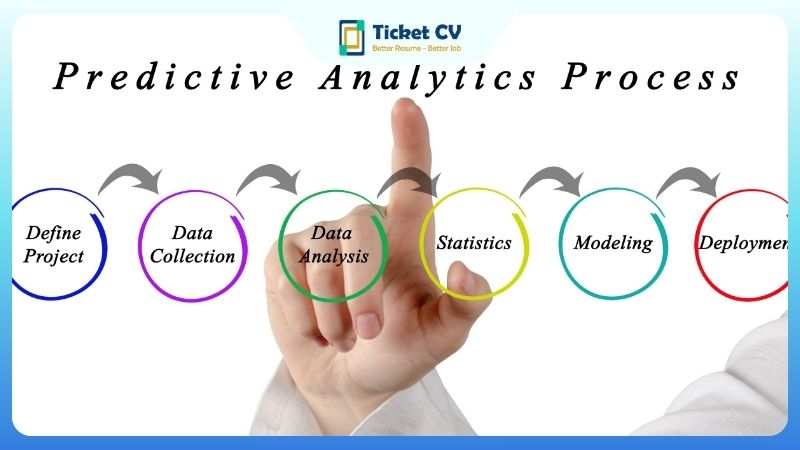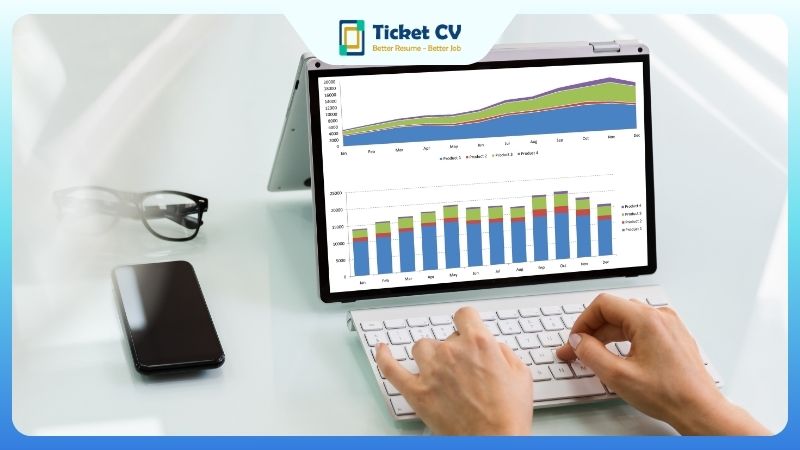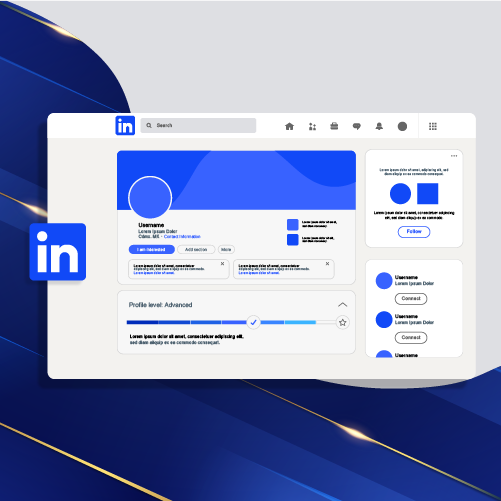The Predictive Index Behavioral Assessment is a valuable tool for understanding an individual’s work and communication style, as well as their personality profile, cognitive ability, and job test prep. It plays a crucial role in the job test prep process, aiding employers in making informed hiring decisions using personality tests and personality profiles. This personality test aims to evaluate behavioral traits, providing insights into how individuals may fit within a specific role or team dynamic. The test generates a personality profile and match scores based on the given criterion. Understanding the purpose of this personality profile assessment and differentiating it from cognitive assessments is essential for leveraging its benefits effectively. It is crucial for specific role and job test prep criterion. The personality profile obtained from the Predictive Index Behavioral Assessment is crucial for job test prep, helping to match score candidates and optimize team dynamics. It’s also valuable for practice within organizations. In this post, we will explore the significance of the Predictive Index Behavioral Assessment (BA), its distinct advantages for organizational decision-making, and its impact on profile choice and scoring.
Contents
ToggleAnalysing PI Assessment Profiles
Understanding the different components of a PI assessment profile is crucial for employers to make informed hiring choices and assess people effectively. It helps in determining the score of potential candidates. The predictive index behavioral assessment comprises a list of adjectives that provide insights into an individual’s work style, communication preferences, and behavioral drives, helping to create a profile score. Similarly, the cognitive assessment results shed light on an individual’s learning agility, problem-solving abilities, decision-making skills, and overall score. This information helps to build a comprehensive profile of people, using adjectives to describe their capabilities.
Analytical Profiles
Analytical profiles, which are the target of the predictive index cognitive assessment, typically exhibit characteristics such as attention to detail, logical thinking, and a preference for data-driven decision-making. These adjectives are used to score the cognitive assessment. These adjectives traits are often identified in the target assessment through responses that emphasize systematic approaches to problem-solving and a focus on precision, which can contribute to a higher score. Common roles suited for analytical profiles include data analysts, research scientists, financial planners, and other positions that require strong analytical skills to target specific objectives and achieve high scores.
Social Profiles
Social profiles are linked with adjectives like relationship-building skills, empathy, and effective communication abilities. These traits can be assessed using the pi behavioral assessment to target specific areas for improvement and development. This can help in determining an individual’s score in various aspects of their behavior. Within the assessment, these traits can be identified through responses that highlight collaboration, people-oriented perspectives, and a focus on team dynamics. These traits are essential for creating a strong profile and achieving a high score. Suitable job positions for social profiles encompass customer service representatives, human resources specialists, and community outreach coordinators. These positions may require a ca, pi behavioral assessment to target the right candidates for the role.
Stabilizing and Persistent Profiles
The CA pi behavioral assessment identifies consistent personality traits over time, while persistent profiles exhibit enduring strengths in various situations. Reference profiles serve as benchmarks for comparing an individual’s personality traits against established norms in the context of the pi behavioral assessment. This helps to target specific behaviors and traits in CA individuals. Understanding stabilizing and persistent profiles is essential for effective job assessments as it allows organizations to align candidates’ characteristics with specific job requirements and target the right individuals.
The predictive index behavioral assessment test offers valuable insights into an individual’s work-related behaviors and cognitive capabilities. It helps in creating a comprehensive profile of the individual, which can be used to target specific roles within an organization. Leveraging the PI Behavioral Assessment enables organizations to make data-driven decisions when selecting candidates or forming teams based on complementary skill sets and target profile.
By recognizing the distinct components of each profile type within the target predictive index behavioral assessment – including analytical, social, stabilizing, and persistent – employers can effectively match individuals with roles that align with their inherent strengths and working styles. This alignment fosters employee satisfaction while enhancing overall team performance and is beneficial for understanding individual behavior through the use of a profile and the PI Behavioral Assessment.

Key Traits Measured by the PI
Dominance, Extraversion, Patience, Formality
The PI assessment measures personality traits and cognitive abilities. One of the key traits the pi behavioral assessment evaluates is dominance, which signifies assertiveness and confidence in decision-making. Understanding extraversion in the assessment is crucial as it gauges an individual’s sociability and enthusiasm in social interactions. Moreover, identifying patience and formality traits through a pi behavioral assessment provides insights into how individuals handle pressure and their adherence to rules and structure.
Interpreting Secondary Traits
The predictive index behavioral assessment delves into secondary traits in personality assessments. It interprets scaled scores and characteristic analysis to identify behavioral qualities and perceptions in personality tests. This enables a comprehensive exploration of extraversion and abilities within personality profiles, using the PI behavioral assessment.
The PI survey assesses key traits that contribute to an individual’s personality profile. By evaluating specific qualities such as dominance, extraversion, patience, and formality, it provides valuable insights into an individual’s behavioral characteristics and strengths. The assessment not only measures primary traits but also delves deeper into secondary traits to provide a holistic view of an individual’s personality.
In the context of dominance, individuals with high scores in the pi behavioral assessment tend to exhibit assertive leadership qualities while those with lower scores may prefer collaboration or teamwork-oriented roles. Similarly, understanding extraversion is essential as it helps identify individuals who thrive in social settings versus those who excel in more solitary or independent roles, which can be assessed through a pi behavioral assessment.
When interpreting secondary traits like patience and formality, the assessment uncovers how individuals cope under pressure or adhere to rules within a structured environment. For instance, individuals scoring high on patience might be well-suited for roles requiring composure under stress, while those scoring low may thrive in fast-paced environments demanding quick decision-making.
In addition to these primary characteristics measured by the PI survey, secondary traits play a pivotal role in providing a nuanced understanding of an individual’s behavior. These secondary traits are crucial for employers aiming to match candidates with roles that align with their natural inclinations and strengths.
Understanding scaled scores offers employers a detailed breakdown of an individual’s behavioral tendencies. For example, if someone exhibits high levels of dominance alongside low levels of patience or formalities, this could indicate potential areas where they may excel or struggle within certain work environments.
Preparing for the PI Behavioral Assessment
How to Prepare Adequately
Adequate preparation for the PI Behavioral Assessment is crucial for success in the interview process. Understanding the purpose of the assessment and its significance in evaluating personality traits and behaviors can help candidates approach it with confidence. By familiarizing oneself with the format and structure of the assessment, individuals can alleviate anxiety and perform optimally.
Preparing adequately involves recognizing the importance of aligning one’s personality traits with job requirements. This understanding enables candidates to showcase their suitability for a particular role during the assessment. Managing stress during preparation is vital to maintain focus and composure while practicing sample questions and assessments.
Mastering PI Assessment Preparation Tips
To master PI assessment preparation, candidates should thoroughly understand its format and structure. This comprehension allows individuals to strategize their approach effectively, ensuring they allocate appropriate time to each section. Practicing with sample PI cognitive and behavioral assessments is essential as it familiarizes candidates with the types of questions they may encounter, enhancing their readiness for the actual test.
Moreover, utilizing resources such as practice tests, study materials, and guidance available for PI test prep can significantly enhance preparation efforts. These resources provide valuable insights into what to expect during the assessment and offer strategies for tackling different types of questions. Developing techniques for managing time constraints and stress during the PI assessment further contributes to mastering its preparation.
Utilizing Free Resources and Sample Tests
Free resources play a pivotal role in aiding candidates’ preparation for the predictive index behavioral assessment. Accessible sample tests enable individuals to gauge their current proficiency levels while identifying areas that require improvement. Leveraging these resources not only reduces financial barriers but also provides an opportunity for extensive practice before undertaking the actual assessment.
Furthermore, utilizing reliable sample tests offers insights into common question formats, enabling candidates to become more comfortable with answering them accurately within time constraints. Platforms that offer reputable sample tests ensure that candidates have access to relevant preparatory material that closely mirrors what they will encounter in the actual PI behavioral assessment.

Understanding Scores and Results Interpretation
Average Scores on the Cognitive Assessment
Understanding average cognitive scores is crucial for evaluating individual performance. The cognitive assessment measures an individual’s ability to solve problems, learn, and apply new information. According to industry standards, the average score on a cognitive assessment typically falls within the 40th to 60th percentile.
Interpreting individual performance based on the cognitive assessment results is essential for identifying strengths and areas that may require improvement. For instance, if an individual scores above the 60th percentile, it indicates strong cognitive abilities, while a score below the 40th percentile may suggest potential challenges in certain cognitive tasks.
Benchmarking against industry standards provides valuable insights into how an individual’s cognitive abilities compare with those of their peers in similar roles or industries. This comparison aids employers in making informed decisions regarding candidate selection and development strategies.
Employer’s Perspective on PI Results
Employers view assessment results as valuable tools for making informed hiring decisions. By analyzing predictive index (PI) test results, employers gain behavioral insights that help them understand how candidates are likely to perform in specific roles. For example, if a candidate demonstrates high dominance traits in their personality profile, they might be better suited for leadership positions or roles requiring assertiveness.
The impact of PI test results on hiring decisions is significant as they provide objective data to complement traditional interviews and resumes. Employers can use these insights to ensure that candidates are not only qualified but also align with the organization’s culture and job requirements.
Utilization of Test Results
Organizations utilize test results to inform training and development programs tailored to employees’ unique strengths and weaknesses. For instance, if a team member exhibits high extraversion traits in their personality assessments, they may benefit from communication skills workshops or customer-facing role training.
Personalized coaching based on test results enables managers to understand each employee’s working style better and adapt their leadership approach accordingly. By leveraging these insights, managers can effectively support their team members in achieving optimal performance while fostering a positive work environment conducive to individual growth.
Strategies for Desired PI Survey Outcomes
Authenticity in Personality Tests
Maintaining authenticity in responses is crucial when undertaking the PI assessment. It’s essential to provide genuine answers that reflect one’s true characteristics, as this ensures accurate results. By doing so, individuals can avoid common pitfalls in assessments and benefit from a more precise understanding of their behavioral traits.
Tailoring Answers to Job Position
When responding to the PI survey, it’s important to customize answers based on the specific requirements of the job position. Tailoring responses involves matching one’s personality traits with the job’s demands, creating a tailored approach without misrepresentation. This tailored approach aligns personal strengths with the role’s needs while maintaining authenticity.
Strategies for Achieving Desired Results
To achieve desired outcomes in the PI assessment, individuals should focus on managing their expectations during the process. They can leverage tips for achieving favorable assessment results by emphasizing their strengths and understanding how these qualities align with the organization’s objectives.
Understanding the specific qualities and strengths targeted in the PI assessment is paramount for success. By comprehending what attributes are being evaluated, individuals can better prepare themselves for the evaluation process. For instance, if an organization seeks employees with strong leadership skills or problem-solving abilities, candidates can tailor their mindset and responses accordingly.
Familiarizing oneself with question types and practicing similar assessments aids effective preparation for the PI survey. This proactive approach allows individuals to become familiar with various question formats and understand how to respond appropriately. Moreover, practice enables candidates to refine their responses and improve their performance.
The results of both cognitive and behavioral assessments in the PI survey serve as valuable insights that inform an organization’s interview and selection processes. These assessments provide data on an individual’s cognitive abilities and behavioral tendencies, helping recruiters make informed decisions about candidate suitability for specific roles within their company.
Matching scores from behavioral assessments with desired employee engagement outcomes is pivotal for organizational success. By aligning behavioral assessment results with employee engagement goals, companies can ensure that new hires possess characteristics conducive to a positive work environment and contribute effectively to organizational objectives.

Navigating the Assessment Structure
Unveiling the PI Structure
The Predictive Index (PI) assessment is structured to evaluate cognitive and behavioral traits. It consists of key components such as a cognitive assessment and behavioral assessments, which are crucial for understanding an individual’s work style and tendencies. Navigating through different sections involves addressing questions related to dominance, extroversion, patience, and formality.
Understanding What PI Measures
The PI assessment measures cognitive and behavioral traits within approximately 12 minutes. It evaluates qualities such as dominance, extroversion, patience, and formality. The results are presented as scaled scores and compared to reference profiles.
Measurement Criteria of the Assessment
The criteria used for measurement in the PI assessment are essential for evaluating performance against specific benchmarks. These measurements have significant implications for career progression as they provide insights into an individual’s strengths and areas that may require development.
The structure of the Predictive Index assessment is designed to assess various aspects of an individual’s personality and work style. It includes both cognitive and behavioral assessments that offer a comprehensive understanding of their traits. Navigating through different sections involves addressing questions related to dominance, extroversion, patience, and formality, providing valuable insights into how individuals approach tasks and interact with others in professional settings.
The PI assessment measures cognitive and behavioral traits within approximately 12 minutes. This efficient evaluation process ensures that candidates can complete the assessment promptly while providing organizations with valuable insights into potential employees’ characteristics. By presenting results as scaled scores compared to reference profiles, it offers a clear benchmark for comparison, facilitating informed decision-making during the selection process.
In terms of measurement criteria, the PI assessment provides a standardized framework for evaluating individuals’ performance against specific benchmarks. This not only aids in identifying suitable candidates during the interview process but also plays a crucial role in career progression by highlighting areas where individuals excel or may need further development.
Understanding these key aspects of the Predictive Index assessment equips organizations with valuable tools for making informed decisions during the hiring process while offering individuals insights into their own strengths and areas for improvement.
Addressing Common PI Assessment Questions
Insight into Reference Profiles
Gaining Insights from Reference Profiles
Reference profiles in Predictive Index (PI) assessments offer valuable insights into the behavioral traits and cognitive abilities required for specific roles. These profiles provide a benchmark for comparing candidates’ natural inclinations with the ideal attributes sought by organizations.
Leveraging Reference Profiles for Self-assessment
Individuals can utilize reference profiles to gain a deeper understanding of their own strengths and areas for development. By comparing their personal traits to the reference profiles, individuals can identify areas where they align well with job requirements and areas that may benefit from further skill enhancement.
Impact on Personal Development
Engaging with reference profiles not only aids in professional pursuits but also contributes to personal growth. Understanding one’s behavioral tendencies and cognitive preferences fosters self-awareness, enabling individuals to make informed decisions about career paths and development opportunities.
Addressing FAQs About the Assessment
Answering Common Questions About PI Assessments
It is common for individuals to seek clarity on the question types encountered in PI assessments. The assessment typically includes questions related to work-related behaviors, cognitive aptitude, and personality traits. Understanding these question types can help candidates prepare more effectively.
Clearing Misconceptions About Assessments
One frequent misconception revolves around the idea that there are right or wrong answers in PI assessments. In reality, these assessments aim to uncover an individual’s natural inclinations rather than evaluating responses as objectively correct or incorrect.
Providing Accurate Information About Assessments
Another important aspect involves addressing concerns about the interview process associated with PI assessments. Candidates often wonder how best to prepare for this stage, seeking guidance on navigating the interview after completing the assessment successfully.
The Predictive Index (PI) cognitive assessment evaluates an individual’s ability to understand complex information, learn quickly, adapt, and solve problems – essential skills across various job roles. It measures general mental ability through questions related to numerical reasoning, verbal reasoning, and abstract reasoning.
They focus on identifying an individual’s workplace behaviors – how they communicate, approach tasks, handle challenges, work within teams, and manage priorities. This comprehensive evaluation provides organizations with valuable insights into candidates’ potential fit within specific roles.
In preparation for interviews following successful completion of PI assessments, candidates should familiarize themselves with their own results and be prepared to discuss how their natural tendencies align with job requirements. Understanding the company culture and role expectations can greatly enhance interview performance.
Target Audience and Test Locations
Who Should Take the PI Behavioral Assessment
The Predictive Index (PI) Behavioral Assessment is designed for job candidates, employees, and teams. It provides valuable insights into an individual’s work behavior and cognitive abilities, aiding in predicting workplace performance and job fit. This assessment is particularly beneficial for organizations looking to make informed hiring and talent management decisions.
The PI Behavioral Assessment helps identify the target audience for specific job roles within an organization. By evaluating behavioral patterns and cognitive capabilities, employers can better understand how individuals may perform in certain positions. This insight allows companies to tailor job requirements to match the strengths of potential candidates effectively.
Understanding the test format is crucial for effective job test preparation and matching scores. The assessment process involves various question types that are designed to evaluate a candidate’s strengths and weaknesses accurately. By comprehending the test format, individuals can prepare more effectively, increasing their chances of achieving higher scores.
Reference groups are utilized during the assessment process to compare an individual’s results with those of a relevant peer group. This comparison aids in identifying unique strengths or areas needing improvement in candidates. Employers use this information to make informed decisions during the candidate selection process, ensuring they choose individuals who align with the required criteria for specific roles.
Where to Take the Assessment
The PI Behavioral Assessment can be taken at designated locations that offer these assessments. These locations provide a suitable environment for candidates or employees to complete the assessment comfortably.
Moreover, flexibility in assessment locations allows individuals to choose a convenient venue based on their preferences or proximity. This ensures that participants can undertake the assessment without facing unnecessary logistical challenges.
Scheduling options for assessments further enhance convenience by enabling individuals to select a time that best suits their availability. Whether it’s during business hours or outside regular working times, scheduling flexibility accommodates diverse schedules while ensuring optimal conditions for completing the assessment.
Joining The PI Test Preparation Community
Access Free Practice Tests and Resources for PI Assessment Preparation
Joining the community grants access to a wealth of free practice tests and resources tailored to assist individuals in preparing for the PI assessment. These resources often include mock tests, study materials, and expert tips designed to familiarize test-takers with the format and content of the PI cognitive assessment.
Learn About the Test Format and Tips for Improving Your PI Test Scores
Within this community, individuals can gain valuable insights into the specific format of the PI test. Members receive practical tips and strategies aimed at enhancing their performance during the assessment. Understanding the nuances of the test format empowers candidates to approach it with confidence, potentially leading to improved scores.
Connect with a Community of Job Seekers and Professionals Preparing for The PI Behavioral Assessment
By becoming part of this community, individuals have the opportunity to engage with like-minded peers who are also navigating through the job test prep process. This connection fosters an environment where experiences can be shared, questions can be answered, and support can be provided throughout each stage of preparation.
Gain Insights Into How The PI Test Results Can Impact Employee Engagement and Team Dynamics
Being part of this community not only aids in individual preparation but also provides insights into how PI test results influence employee engagement and team dynamics within organizations. Understanding these impacts is crucial as it allows individuals to comprehend how their performance on these assessments may affect their future roles within a company.
Becoming Part of The Break Community
Joining The Break Community offers more than just social interaction; it presents an opportunity for individuals to integrate into new groups effectively. Active participation in this community facilitates enhanced social interaction among employees, fostering stronger team bonding while positively impacting employee engagement levels within organizations.
Tips for Integrating Into a New Group And Thriving in The Work Environment
The Break Community equips its members with valuable tips on integrating into new groups seamlessly. These tips encompass effective communication strategies, understanding team dynamics, leveraging personal strengths to contribute positively to company culture, ultimately promoting a thriving work environment.
Enhancing Employee Engagement Through Active Participation And Communication
Active participation within The Break Community directly contributes to enhancing employee engagement levels by creating avenues for open communication, idea-sharing opportunities, and collaborative problem-solving exercises that strengthen bonds among team members.
Utilizing Your Strengths And Abilities To Contribute Positively To The Company Culture
This community emphasizes recognizing individual strengths and abilities as vital assets that can significantly impact company culture. By encouraging members to leverage their unique qualities positively within their teams, it fosters an environment where every member’s contributions are valued towards collective success.
Conclusion
Understanding the predictive index survey is crucial for individuals and organizations aiming to make informed decisions about talent management. By analyzing assessment profiles, exploring key traits, and preparing effectively, one can navigate the assessment structure and address common questions with confidence. Interpreting scores accurately and strategizing for desired outcomes are essential steps toward leveraging the full potential of the PI survey. Joining the PI test preparation community can provide valuable support and insights for individuals seeking to excel in this aspect of talent assessment. Embracing these insights will empower individuals and organizations to harness the power of the predictive index survey effectively.
For further guidance and support in mastering the predictive index survey, individuals are encouraged to engage with the PI test preparation community and continue their exploration of this valuable resource.
Frequently Asked Questions
What is the Predictive Index Behavioral Assessment?
The Predictive Index (PI) Behavioral Assessment is a tool used to assess workplace behavior and provide insights into an individual’s work style, preferences, and potential fit within an organization.
How are PI Assessment Profiles analyzed?
PI Assessment Profiles are analyzed by evaluating the individual’s scores in various behavioral dimensions, such as dominance, extroversion, patience, and formality. These scores help in understanding the person’s natural tendencies and behavioral patterns.
What are the key traits measured by the PI?
The key traits measured by the PI include dominance, extroversion, patience, and formality. These traits provide valuable insights into how individuals interact with others, approach tasks, handle challenges, and make decisions in a work environment.
How can one prepare for the PI Behavioral Assessment?
Preparation for the PI Behavioral Assessment involves understanding its purpose and familiarizing oneself with the assessment structure. It also includes reflecting on personal work experiences to gain insight into one’s behavioral tendencies.
What strategies can be employed for desired PI Survey outcomes?
Strategies for achieving desired PI Survey outcomes involve leveraging self-awareness about one’s behavioral tendencies to align with specific job requirements. This may include adapting communication styles or adjusting approaches to teamwork based on assessment insights.












